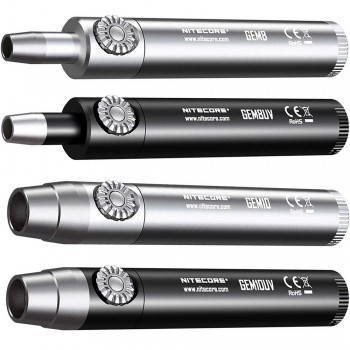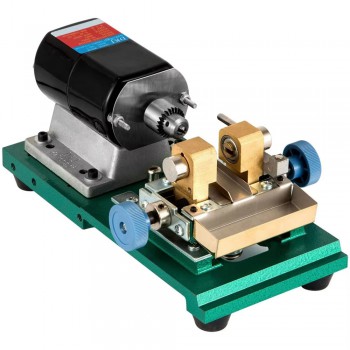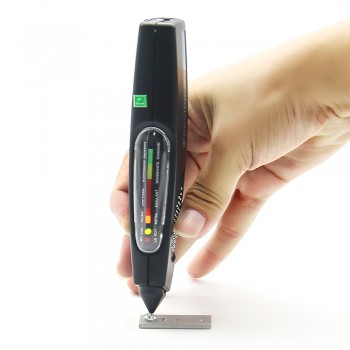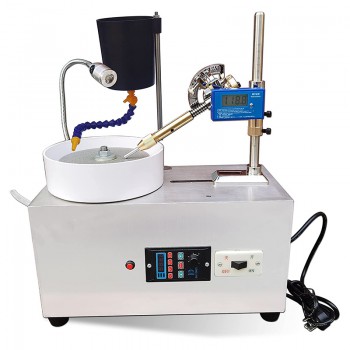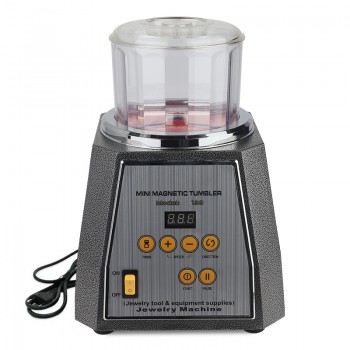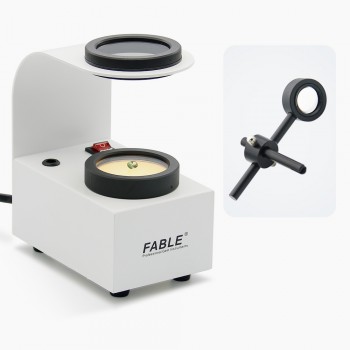
Gem Polariscope
What Is It?
A gem polariscope is an optical instrument used in gemology to study how light interacts with gemstones. It helps determine whether a stone is singly refractive, doubly refractive, or shows abnormal optical behavior. This device consists of two polarizing filters arranged above and below the sample, allowing changes in light patterns to be observed during rotation. It supports gemstone identification by revealing optical properties that cannot be detected with the naked eye and is commonly used in laboratories, workshops, and teaching environments.
Working Principle and Function
It operates on the principle of polarized light. When light passes through the lower polarizing filter, the waves are aligned into a single plane. The gemstone is placed between the two filters, and as the upper analyzer is rotated, variations in light transmission become visible. A singly refractive stone remains dark throughout rotation, while a doubly refractive one alternates between light and dark. Some materials display irregular patterns caused by internal strain or complex crystal structures. These reactions help users interpret optical behavior and support accurate classification.
Structure and Characteristics
A typical unit includes a light base, two polarizing filters, and an adjustable analyzer positioned above the viewing area. The lower section usually contains a built-in light source, such as LED or daylight-balanced illumination. Some versions are equipped with a conoscope lens for observing interference figures, which provide additional information about optical axes. Compact designs are suitable for field use, while larger laboratory models offer improved stability and viewing comfort. Durable construction helps maintain clarity and resist surface wear during repeated testing.
What should you consider when buying one?
When choosing one, important factors include size, lighting quality, viewing comfort, and intended use. For routine workshop identification, a model with stable LED illumination and adjustable filters supports consistent results. For teaching or advanced analysis, versions that accept a conoscope attachment can provide deeper optical insight. Portable units are useful for traders and collectors who require on-site verification. It is also helpful to confirm whether adjustable light intensity and compatible accessories, such as viewing lenses or carrying cases, are included.
Purchase and Operation Considerations
Before purchasing, users should review specifications such as power requirements, light source type, and analyzer rotation range. During operation, the gemstone is placed on the lower filter and illuminated from below. The observer views it through the upper analyzer and rotates it slowly to study light behavior. Gradual rotation reveals changes in brightness that indicate optical character. When available, a conoscope lens can be used to observe interference patterns for identifying uniaxial or biaxial stones. It should be used in a clean environment to avoid dust affecting visual accuracy.
Application Areas
It is widely applied in laboratories, jewelry design studios, gemstone trading, and education. It supports identification, detection of synthetic or treated materials, and evaluation of optical properties. Stones commonly examined include quartz, tourmaline, sapphire, spinel, and topaz. It also assists in revealing strain patterns or crystal twinning. In production settings, it supports quality control before cutting or setting, while students use it to learn essential optical recognition techniques.


